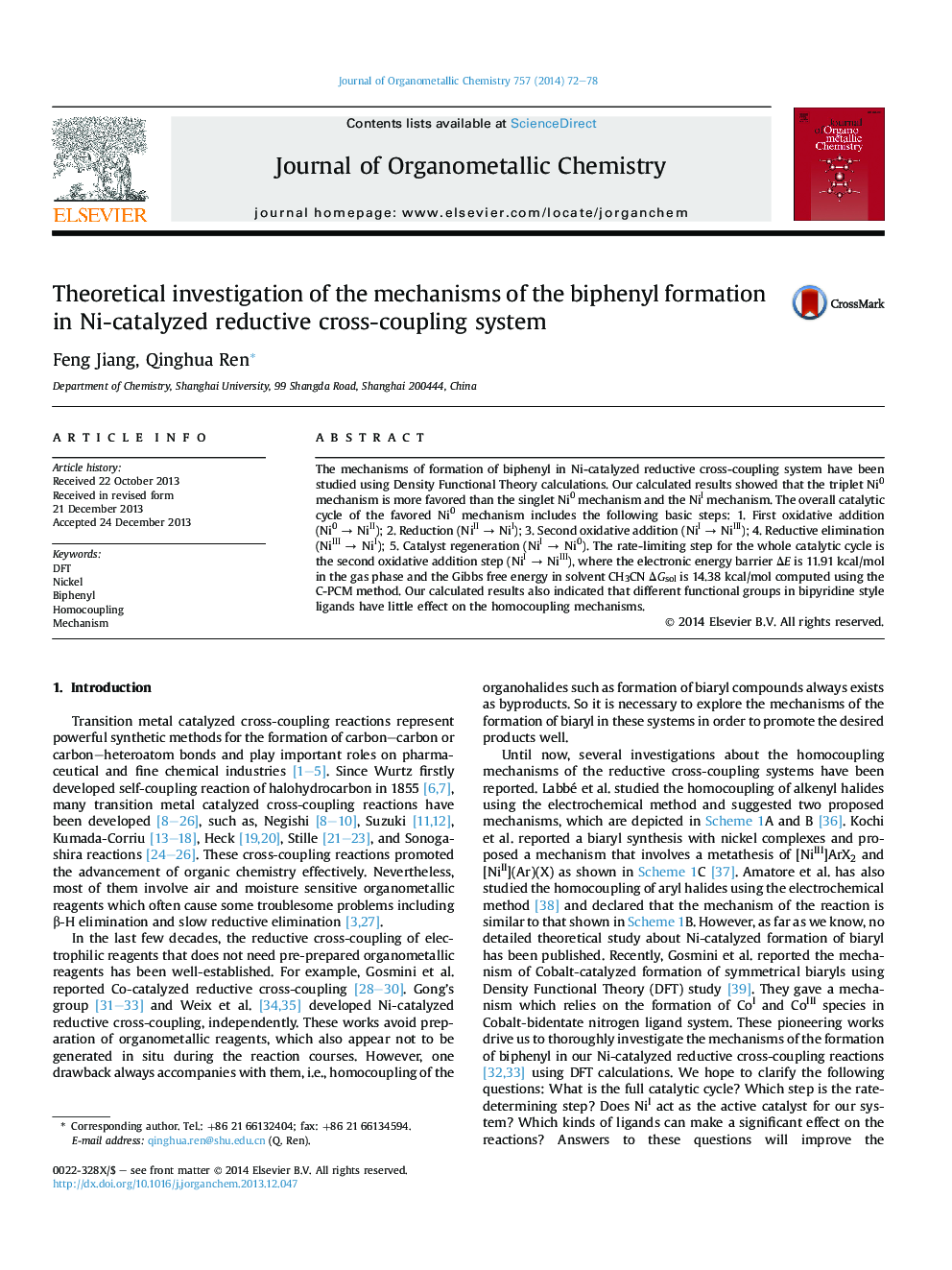| Article ID | Journal | Published Year | Pages | File Type |
|---|---|---|---|---|
| 1322467 | Journal of Organometallic Chemistry | 2014 | 7 Pages |
•We investigated mechanisms of formation of biphenyl in Ni-catalyzed reductive cross-coupling system.•The triplet Ni0 mechanism is more favored than the singlet Ni0 mechanism and the NiI mechanism.•The rate-limiting step is the second oxidative addition step (NiI → NiIII).•We studied ligand effects of four kinds of different bipyridine style ligands.
The mechanisms of formation of biphenyl in Ni-catalyzed reductive cross-coupling system have been studied using Density Functional Theory calculations. Our calculated results showed that the triplet Ni0 mechanism is more favored than the singlet Ni0 mechanism and the NiI mechanism. The overall catalytic cycle of the favored Ni0 mechanism includes the following basic steps: 1. First oxidative addition (Ni0 → NiII); 2. Reduction (NiII → NiI); 3. Second oxidative addition (NiI → NiIII); 4. Reductive elimination (NiIII → NiI); 5. Catalyst regeneration (NiI → Ni0). The rate-limiting step for the whole catalytic cycle is the second oxidative addition step (NiI → NiIII), where the electronic energy barrier ΔE is 11.91 kcal/mol in the gas phase and the Gibbs free energy in solvent CH3CN ΔGsol is 14.38 kcal/mol computed using the C-PCM method. Our calculated results also indicated that different functional groups in bipyridine style ligands have little effect on the homocoupling mechanisms.
Graphical abstractThe mechanisms of formation of biphenyl in Ni0 or NiI-catalyzed reductive cross-coupling system have been studied using DFT calculations. Bromobenzene was used as the substrate. Our calculated results showed that the triplet Ni0 mechanism is more favored than the singlet Ni0 mechanism and the NiI mechanism.Figure optionsDownload full-size imageDownload as PowerPoint slide
